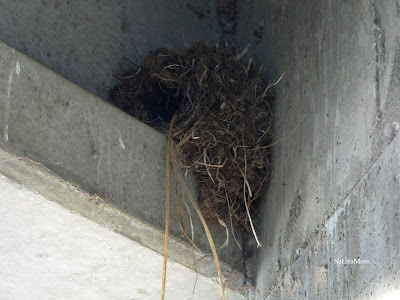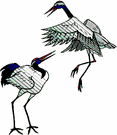It's time to make reservations for private viewing of Lesser Prairie-Chickens se of Lamar with the Dorenkamps, the couple who run
Arena Dust Tours. As I have said when I promoted these tours before, I have no financial interest in this enterprise and am not related to the Dorenkamps. I just met them last year at a Colorado Birding Trail meeting. Like the few other businesses I provide links for (on the right side of the page), I like to help out those who provide exceptional service and, in this case, a great birding opportunity. Also, these folks are a part of the
Colorado Birding Trail.
The Dorenkamps are ranch couple who fit the description "salt of the earth" (defined by Wikipedia as "decent, dependable and unpretentious"). They provide tours on private property to see displaying Lesser Prairie-Chickens, a species of special concern. They have access to several sites so if the birds are not displaying on one site, they will take visitors to one of the alternate sites. Fred Dorenkamp monitors the birds so knows how many birds have been showing up at each location. They now even have a bed and breakfast.
The alternative, the public lek provided on the
Comanche National Grasslands(this is a very informative webs site), while free can be quite daunting. As it is required that visitors arrive at the lek site no later than 1 hour before sunrise/or remain until 1 hour after sunset, it is necessary to drive for sunrise viewing in the dark or drive back in the dark after sunset viewing. It is about a 45 minute drive to the public lek from Springfield, which is closest location for lodging, and a lot of driving on dark, sandy county roads with several turns not well marked (and the sand can be deep causing problems similar to hydro-planing plus there are drop-offs at the edge of the roads down there). It is advisable to do a dry run during daylight hours to find the route when signs can be seen as one doesn't want to make the wrong turn into some farmer's field where they can be stuck in the mud or sand, possibly miles from any human habitation.
The way Arena Dust tours work is that you drive to the Dorenkamps and park your vehicle safely on their property. Visitors are driven to the lek site so they don't have to worry about getting to the correct location or getting stuck. After the viewing the courtship dances of the Lesser Prairie-Chickens is over, visitors will be able to see other local birds on the way back and Fred will tell visitors about the area and it's history. Fred has a wealth of experience and is very knowledgeable about the land and it's history.
The Dorenkamps charged $50/person last year and I suspect the fee this year will be not too different. The third option for viewing Lesser Prairie-Chickens is to join one of the professional tour groups that have trips to view all Colorado grouse. They charged between $2,100 to $2,500 per person for these 9-10 day statewide tours or $1,500 for a 7 day specialized tour last year.
It's time to finalize plans as these "chickens" start diplaying in a week or so.
SeEtta
Labels: Lesser Prairie-Chickens




















































